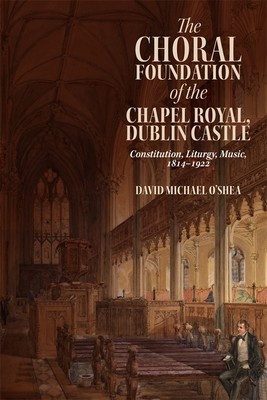
- We will send in 10–14 business days.
- Author: David Michael O'Shea
- Publisher: Boydell Press
- ISBN-10: 178327770X
- ISBN-13: 9781783277704
- Format: 15.6 x 23.4 x 1.9 cm, hardcover
- Language: English
- SAVE -10% with code: EXTRA
The Choral Foundation of the Chapel Royal, Dublin Castle (e-book) (used book) | bookbook.eu
Reviews
Description
The first investigation into the choral foundation of the Chapel Royal, Dublin Castle.
The Chapel Royal, Dublin Castle, was the place of worship of the British monarch's representative in Ireland from 1814 until the inception of the Irish Free State in 1922. It was founded and maintained by the joint efforts of church and state, and thus its history provides valuable insights into how the relationship between religion and politics shaped Irish society and identity. The Dublin Chapel was established in imitation of the Chapel Royal of St James's Palace, London, and was served by a staff of clergy and musicians. Its musical foundation was a formal and independent entity, with its own personnel and performance traditions. Its distinctive repertoire included music from the English and Irish cathedral traditions, as well as works written by composers associated directly with the Chapel. This study investigates the Chapel's constitution, liturgy and music through an examination of previously unexplored primary material. Discussion of the circumstances of the Chapel's founding and its governance structures situates the institution in the context of the church-state relationship that existed following the Union of 1800. Further, by exploring architecture, churchmanship and musical style, O'Shea demonstrates how the Chapel was part of a wider aesthetic and liturgical tradition. The choral foundation is brought to life with accounts of the Chapel's clergy, organists, boy choristers and gentleman singers, which provide insights into Dublin's social history during a period of significant change. This book reflects on the Dublin Chapel Royal's legacy a century after its closure and offers a new perspective into a forgotten corner of Irish cultural, religious and political history.EXTRA 10 % discount with code: EXTRA
The promotion ends in 18d.01:35:14
The discount code is valid when purchasing from 10 €. Discounts do not stack.
- Author: David Michael O'Shea
- Publisher: Boydell Press
- ISBN-10: 178327770X
- ISBN-13: 9781783277704
- Format: 15.6 x 23.4 x 1.9 cm, hardcover
- Language: English English
The first investigation into the choral foundation of the Chapel Royal, Dublin Castle.
The Chapel Royal, Dublin Castle, was the place of worship of the British monarch's representative in Ireland from 1814 until the inception of the Irish Free State in 1922. It was founded and maintained by the joint efforts of church and state, and thus its history provides valuable insights into how the relationship between religion and politics shaped Irish society and identity. The Dublin Chapel was established in imitation of the Chapel Royal of St James's Palace, London, and was served by a staff of clergy and musicians. Its musical foundation was a formal and independent entity, with its own personnel and performance traditions. Its distinctive repertoire included music from the English and Irish cathedral traditions, as well as works written by composers associated directly with the Chapel. This study investigates the Chapel's constitution, liturgy and music through an examination of previously unexplored primary material. Discussion of the circumstances of the Chapel's founding and its governance structures situates the institution in the context of the church-state relationship that existed following the Union of 1800. Further, by exploring architecture, churchmanship and musical style, O'Shea demonstrates how the Chapel was part of a wider aesthetic and liturgical tradition. The choral foundation is brought to life with accounts of the Chapel's clergy, organists, boy choristers and gentleman singers, which provide insights into Dublin's social history during a period of significant change. This book reflects on the Dublin Chapel Royal's legacy a century after its closure and offers a new perspective into a forgotten corner of Irish cultural, religious and political history.

Reviews